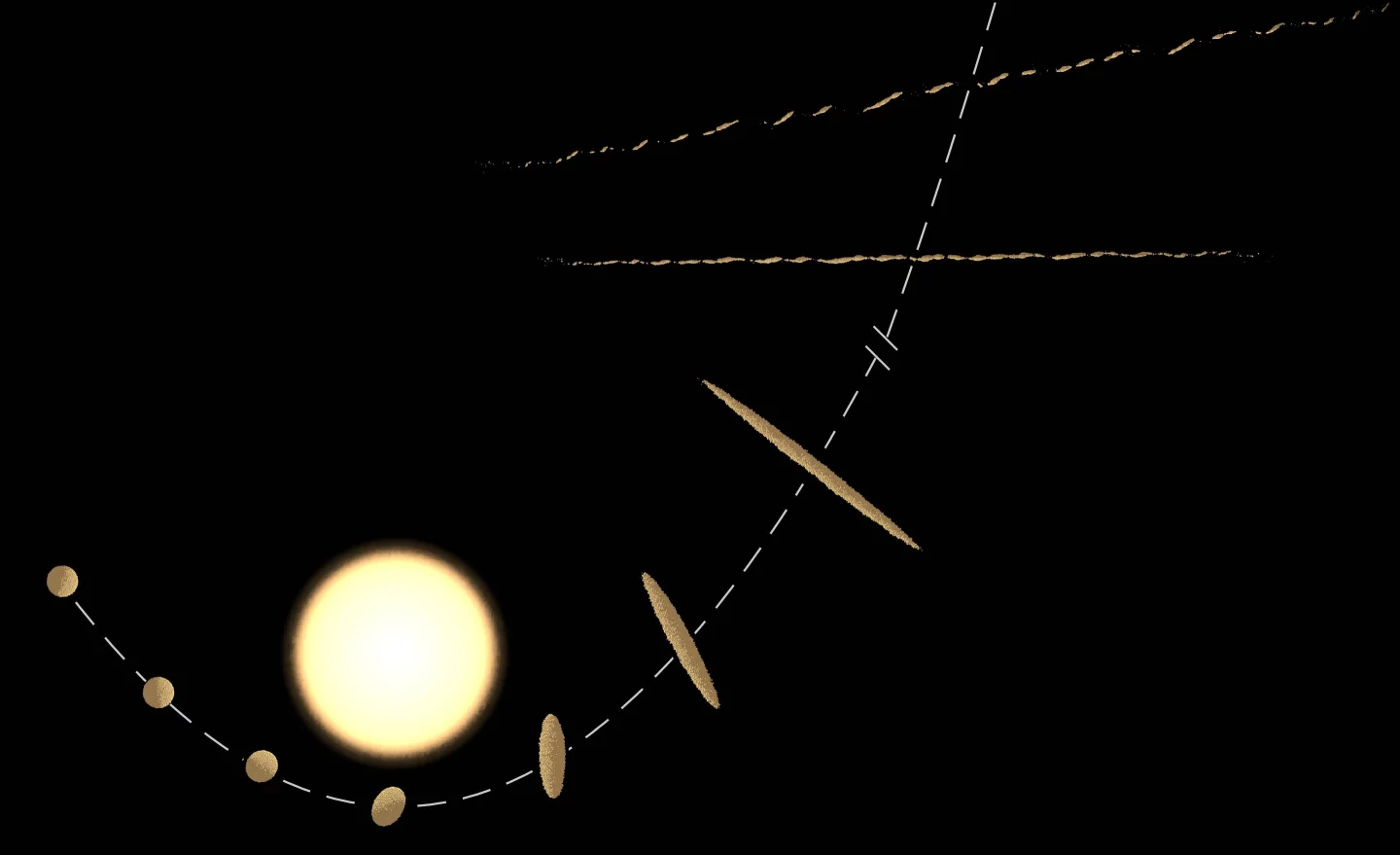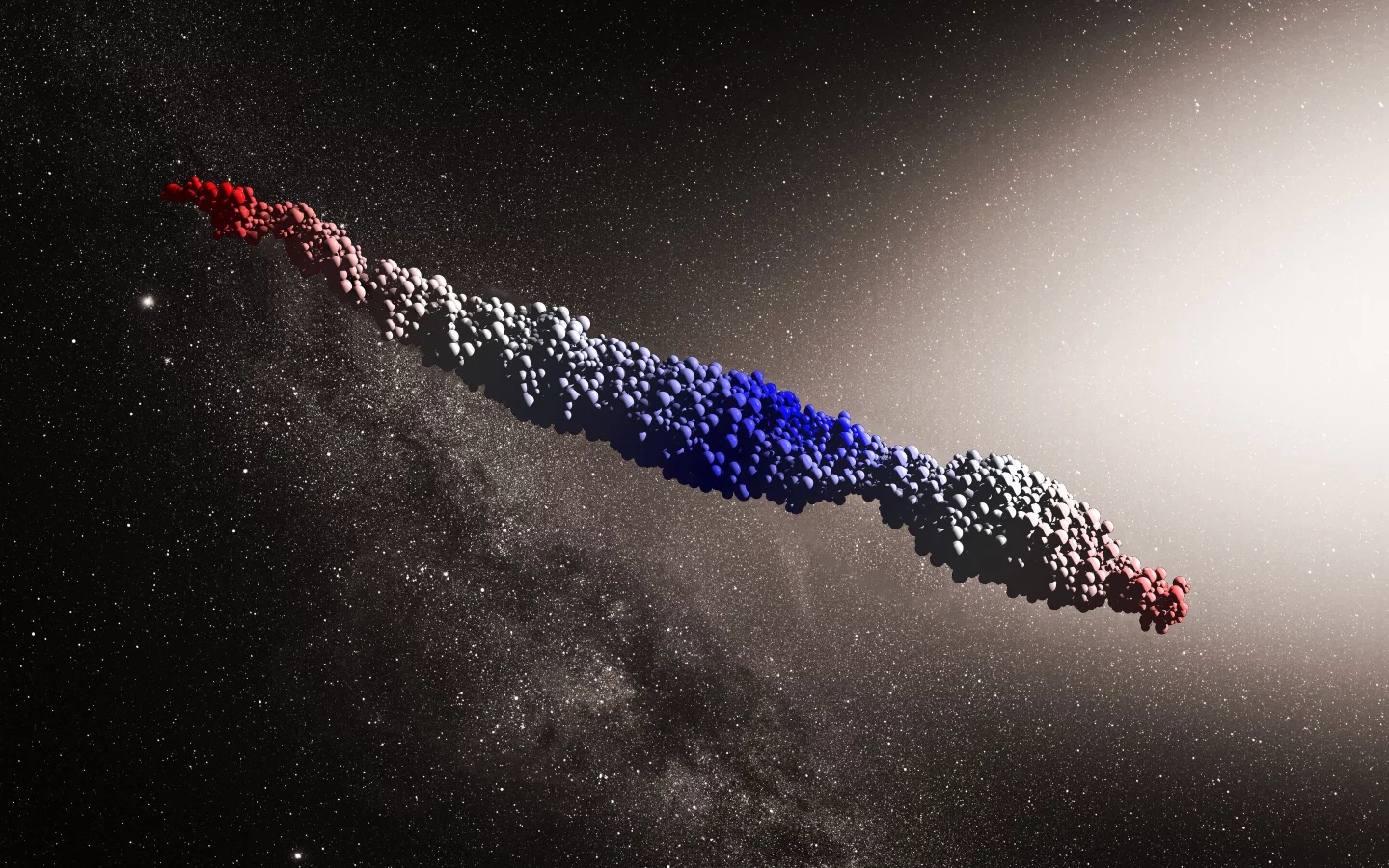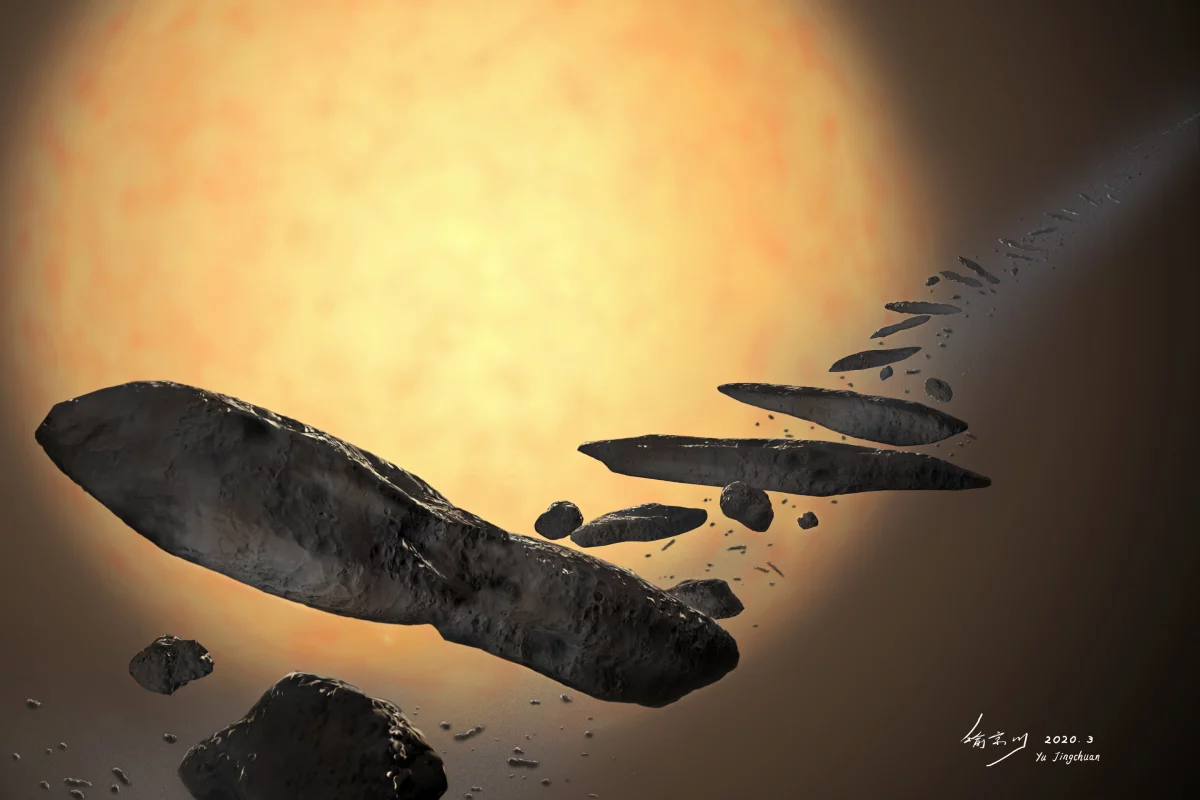‘Oumuamua, the first interstellar interloper detected passing through our solar system, raised many questions when it was discovered. According to a new model, the object’s unusual shape and trajectory may be the result of a devastating close encounter with a star.
In October 2017, astronomers discovered a bizarre object hurtling through our solar system. Unlike most asteroids, which are roundish lumps of rock, this thing was a 400-m (1,300 ft) long spindle, and its trajectory indicated it wasn’t from around here. Odder still, as it whizzed past the Sun it actually sped up.
Closer study (including checking that it wasn’t an alien spacecraft) revealed that it was an asteroid, albeit a very weird one. Not only was it a strange shape, but it gave off some gas like a comet, which explained its unusual acceleration. ‘Oumuamua, as it was later named, has been tumbling end over end through the galaxy for millions of years, and appears to have originated somewhere in the direction of the constellation of Lyra.
And now we may know how it got this specific set of attributes. Researchers from the Chinese Academy of Sciences and UC Santa Cruz developed a model that could account for ‘Oumuamua’s shape, trajectory, and its comet-like outgassing. And perhaps most importantly, it would produce huge amounts of these objects, so us detecting one isn’t a fluke.

Developed using computer simulations, the team’s suggested origin story is that ‘Oumuamua is a fragment of a planet or other large rocky object that underwent a “tidal disruption” process. That means it wandered too close to a star, where enormous gravitational forces stretched and tore apart the parent body into elongated pieces.
This scenario also explains the rest of ‘Oumuamua’s oddities. The surface of the object would have melted while close to the star, and then recondensed as it travelled away, forming a crust that would hold it together in this shape. This close encounter would also have flung it out of its home system into interstellar space.
Importantly, it explains its semi-comet-like characteristics. Comets have tails because they’re coated in icy volatile compounds that begin to melt in sunlight. ‘Oumuamua doesn’t have this kind of coma, but some of those volatiles were trapped under the surface, which began to outgas as it passed the Sun – hence its acceleration.
“Heat diffusion during the stellar tidal disruption process also consumes large amounts of volatiles, which not only explains ‘Oumuamua’s surface colors and the absence of visible coma, but also elucidates the inferred dryness of the interstellar population,” says Yun Zhang, first author of the study. “Nevertheless, some high-sublimation-temperature volatiles buried under the surface, like water ice, can remain in a condensed form.”

This isn’t the first origin story that’s been proposed for ‘Oumuamua. Other astronomers have suggested that it was cast out into the depths of space by the gravitational influence of a binary star system, or even just a passing star that nudged some asteroids out of their orbit around a neighbor. But none of these have accounted for quite as many of ‘Oumuamua’s unusual properties as this new model.
We may never know exactly how or where ‘Oumuamua was born, but astronomers are keeping their eyes out for other interstellar visitors that may help shed light on it.
The research was published in the journal Nature Astronomy.
Source: UCSC






